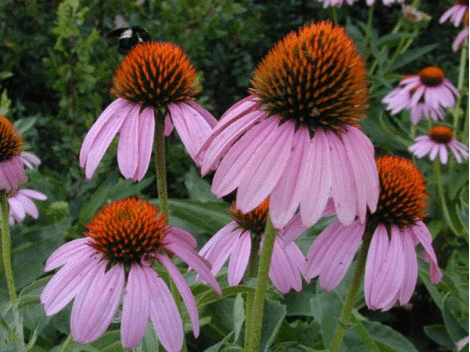With next year’s garden walk’s focus on Native Plants, my attention has turned to reading as much as I can on the subject. Wow, so much fascinating material out there….books, podcasts, and if you’re short on time….youtube for some great interviews with experts in the field. The only downside is as I learn more daily, I’m rethinking both my landscape design and plant choices. The hardest part is figuring out what to do with my non-native plants. I feel guilty throwing plants away and giving non-natives to friends seems counter-productive since the point is to encourage everyone to add more natives. Mike Larrivee solved my dilemma when he said, “Put them on your compost pile and help create good soil”. Ah, thanks, Mike……you absolved my guilt.
This morning I scanned YouTube for some good programs on “Native Plants” and discovered Annie White, a Ph.D. student studying whether pollinators prefer true native open-pollinated plants vs cultivars. Cultivars are plants modified by breeders for specific desirable characteristics…such as height, color, bloom time. Sometimes the cultivars look almost the same as the native plant, other times there’s a notable difference. To tell if the plant is a cultivar, look for single quotes around the name. ex. Achillea millefolium ‘Strawberry Seduction’
Annie White’s research suggests that for most plants, pollinators prefer the true native plant. Plants and pollinators have evolved together over a long time. Changing color may make it less attractive to pollinators who see differently than we do.
Other points from her talk:
- Source native plants from your local area vs other parts of the country
- Plant at least 6 or more of the same plant so pollinators can find them
- Diversify bloom times–aim for 4 season blooms
- Ditch double bloom flowers in favor of single bloom
- Choose cultivars that are most similar to the straight species in flower color, size, shape, and bloom period
Do yourself a favor, and listen to this thought-provoking interview. then look at this ppt on using cultivars and finally check out Annie’s website https://pollinatorgardens.org
